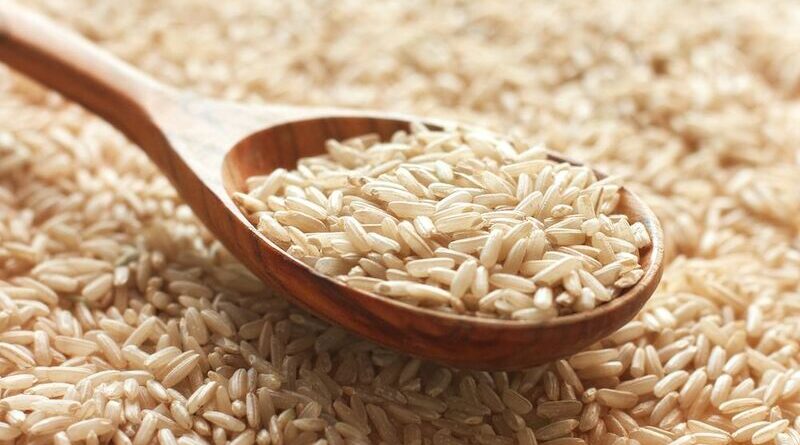Is Brown Rice Healthy? Discover the Truth
Many countries consider brown rice to be a staple grain, and in recent years, its supposed health benefits have drawn attention. Brown rice keeps its bran and germ layers, which are high in fiber and nutrients, in contrast to its refined counterpart, white rice. Brown rice is becoming a more appealing option for health-conscious people looking for processed food substitutes because of its possible health benefits. We explore the subject, “Is brown rice healthy choice?” in this article. Let’s examine its nutritional value, advantages, and factors so you may make well-informed dietary choices.
Health Benefits of Healthy Brown Rice
Brown rice is a great complement to a balanced diet because it provides several health advantages. The following are some of the main benefits that are backed by research:
Heart Health:
Brown rice has fiber, antioxidants, and phytochemicals that are good for the heart. Lower levels of LDL (bad) cholesterol and a lower risk of heart disease are linked to high fiber intake. Antioxidants also aid in preventing inflammation and oxidative stress, both of which are connected to cardiovascular problems.
Healthy Brown Rice Improved Digestive Health:
Brown rice’s high fiber content helps to maintain regular bowel movements, reduce constipation, and support the growth of good gut bacteria. By encouraging feelings of fullness and preventing overeating, fiber also aids in maintaining a healthy weight.
Healthy Brown Rice Stabilized Blood Sugar Levels:
Brown rice affects blood sugar levels more slowly than white rice because it has a lower glycemic index (GI). It is a good choice for people with diabetes or those trying to control their blood sugar levels because of its slower digestion and absorption. Which helps reduce blood sugar spikes and crashes.
Weight Management:
Including brown rice in your meals can help you manage your weight. Because of its high fiber content, which encourages satiety and lowers total calorie consumption. It can help with healthy weight loss or maintenance. Furthermore, brown rice’s complex carbs offer long-lasting energy that supports metabolic processes and fuels physical activity.
Healthy Brown Rice Reduced Risk of Chronic Diseases:
Brown rice can protect against chronic diseases like cancer, diabetes, and neurological disorders because of its antioxidants and phytonutrients. By reducing oxidative stress, cellular damage, and inflammation, these substances help prevent the development of these disorders.
Nutrient Density:
About its calorie count, brown rice is a nutrient-dense food, meaning it offers a substantial number of important nutrients. People can increase their consumption of vitamins, minerals, and antioxidants by including brown rice in their meals. Which promotes general health and well-being.
Comparison with White Rice
Processing and nutritional composition are the main areas where brown rice and white rice diverge. White rice is milled, which removes the fiber and nutrients, while brown rice keeps its bran and germ layers. Therefore, as compared to white rice, brown rice has more fiber, vitamins, minerals, and antioxidants.
Brown rice also has a lower glycemic index, which helps with blood sugar regulation. Selecting brown rice instead of white rice can help with weight control, heart health, and general well-being.
Potential Risks and Side Effects
Although brown rice is typically regarded as a healthful food option, it’s important to be informed of any hazards and adverse effects before consuming it.
These include the presence of arsenic, how phytic acid affects the absorption of minerals, how some people experience stomach discomfort, how it may influence blood sugar levels, allergies, or sensitivity, and how rice farming affects the environment. People can reduce any potential dangers and make educated decisions about incorporating brown rice into their diet by keeping these points in mind.
Cooking and Incorporating Healthy Brown Rice into the Diet
Brown rice can have its flavor and nutritional worth improved by properly cooking it and introducing it into your diet in novel ways. To achieve the right texture, follow easy instructions like washing before cooking and modifying the water ratio. Try out different cooking techniques with the rice cooker, pressure cooker, and cooktop.
Use brown rice as the foundation for salads, soups, stuffed veggies, stir-fries, and grain bowls to incorporate it into your meals. Enjoy the versatility of brown rice in a balanced diet and store leftovers for later.
Healthy Brown Rice in Different Cuisines
A versatile ingredient utilized in cuisines all around the world is brown rice. It goes well with Asian cuisine’s sushi and stir-fries. It can be found in classic Indian cuisines like biryani and dosa. While brown rice is utilized in rice and bean dishes in Latin American cuisine, it may also be found in pilafs and salads in Middle Eastern cuisine.
Brown rice is a common ingredient in grain bowls and casseroles in Western cuisine. Brown rice enhances the taste and nutritional content of many culinary traditions, whether it is used in traditional recipes or fusion cuisine.
Conclusion
In conclusion, the nutrient-rich layers of bran and germ in brown rice provide an abundance of health benefits. It lowers the risk of chronic diseases, improves digestion, stabilizes blood sugar, helps with weight control, and supports heart health. In terms of nutrition, brown rice is a better option than white rice.
But it’s crucial to be aware of possible hazards including intestinal problems and contamination with arsenic. People can benefit from brown rice’s nutritious qualities in a variety of culinary applications and enhance their general health by ingeniously combining it into their meals.
You Ca Read More About Rice
Is White Rice Healthy? Unveiling the Truth Behind This Grain
Amazing Creamy Rice: Secrets, Techniques, and Variations
